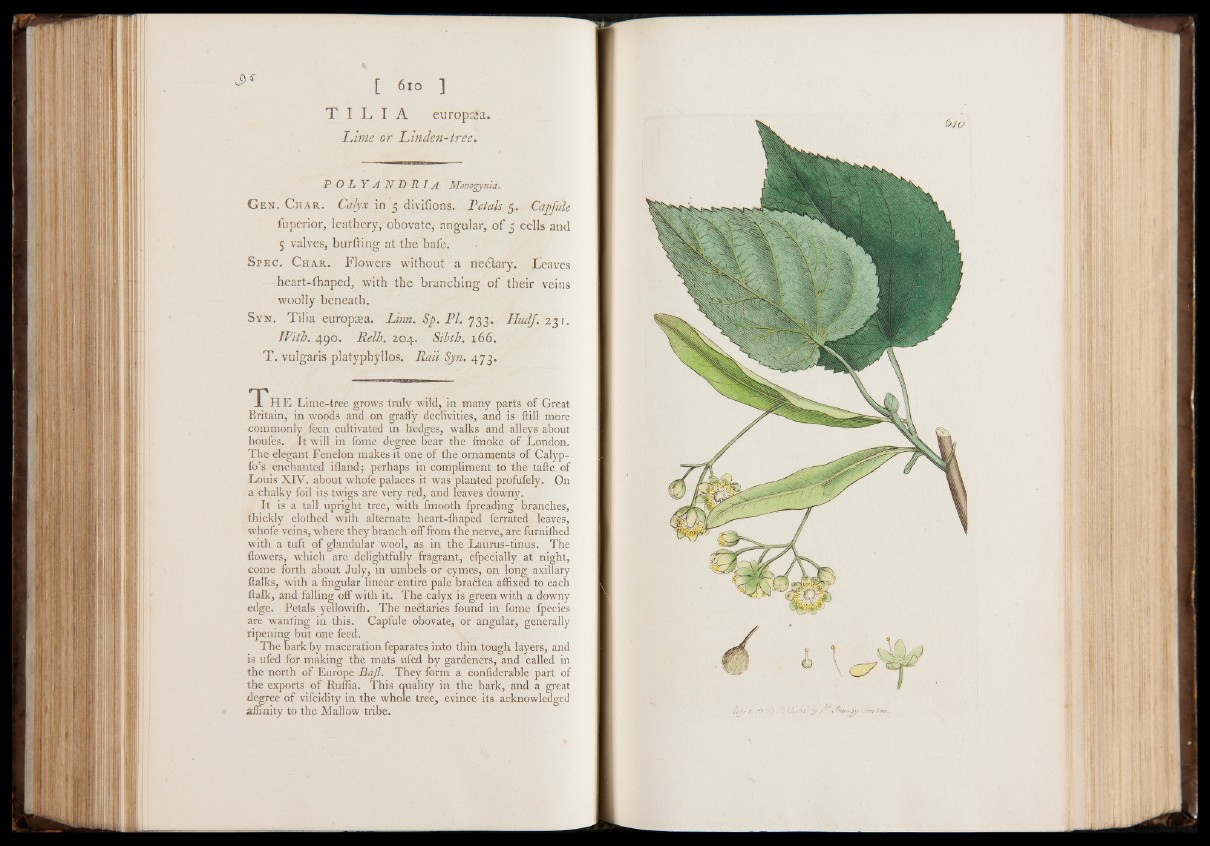
T I L I A europaîa.
Lime or Linden-tree.
P O L Y A N B P l IA Monogynia.
G en. Char. Calyx in 3 divifions. Petals 5. Capfulc
fuperior, leathery, obovate, angular, of 5 cells and
5 valves, burfting at the bafe.
Spec. Char. Flowers without a neékry. Eeaves
heart-thaped, with the branching of their veins
woolly beneath.
Syn. Tilia europæa. Linn. Sp. PI. 733. Hudf. 231.
With. 490. Relh. 204. Sibth. x66.
T. vulgaris platyphyllos. Rati Syn. 473.
T h e Lime-tree grows truly wild, in many parts of Great
Britain,1 in woods and on graffy declivities, and is füll more
commonly feen cultivated in hedges, walks and alleys about
houfes. It will in fome degree bear the fmoke of London.
The elegant Fenelon makes it one of the ornaments of Calyp-
fo’s enchanted ill and; perhaps in compliment to the tafle of
Louis XIV. about whofe palaces it was planted profufely. On
a chalky foil its twigs are very red, and leaves downy.
It is a tall upright tree, with fmooth fpreading branches,
thickly clothed with alternate heart-thaped ferrated leaves,
whofe veins, where they branch off from the nerve, are furnithed
with a tuft of glandular wool, as in the Laurus-tinus. The
flowers, which are delightfully fragrant, efpecially at night,
come forth about July, in umbels or cymes, on long axillary
ftalks, with a lingular linear entire pale bractea affixed to each
ftalk, and falling off with it. The calyx is green with a downy
edge. Petals yellowifh. The nectaries found in fome fpecies
are wanting in this. Capfule obovate, or angular, generally
ripening but one feed.
The bark by maceration feparates into thin tough layers, and
is ufed for making the mats ufed by gardeners, and called in
the north of Europe Baß. They form a conliderable part of
the exports of Ruffia. This quality in the bark, and a great
degree of vifcidity in the whole tree, evince its acknowledged
affinity to the Mallow tribe.